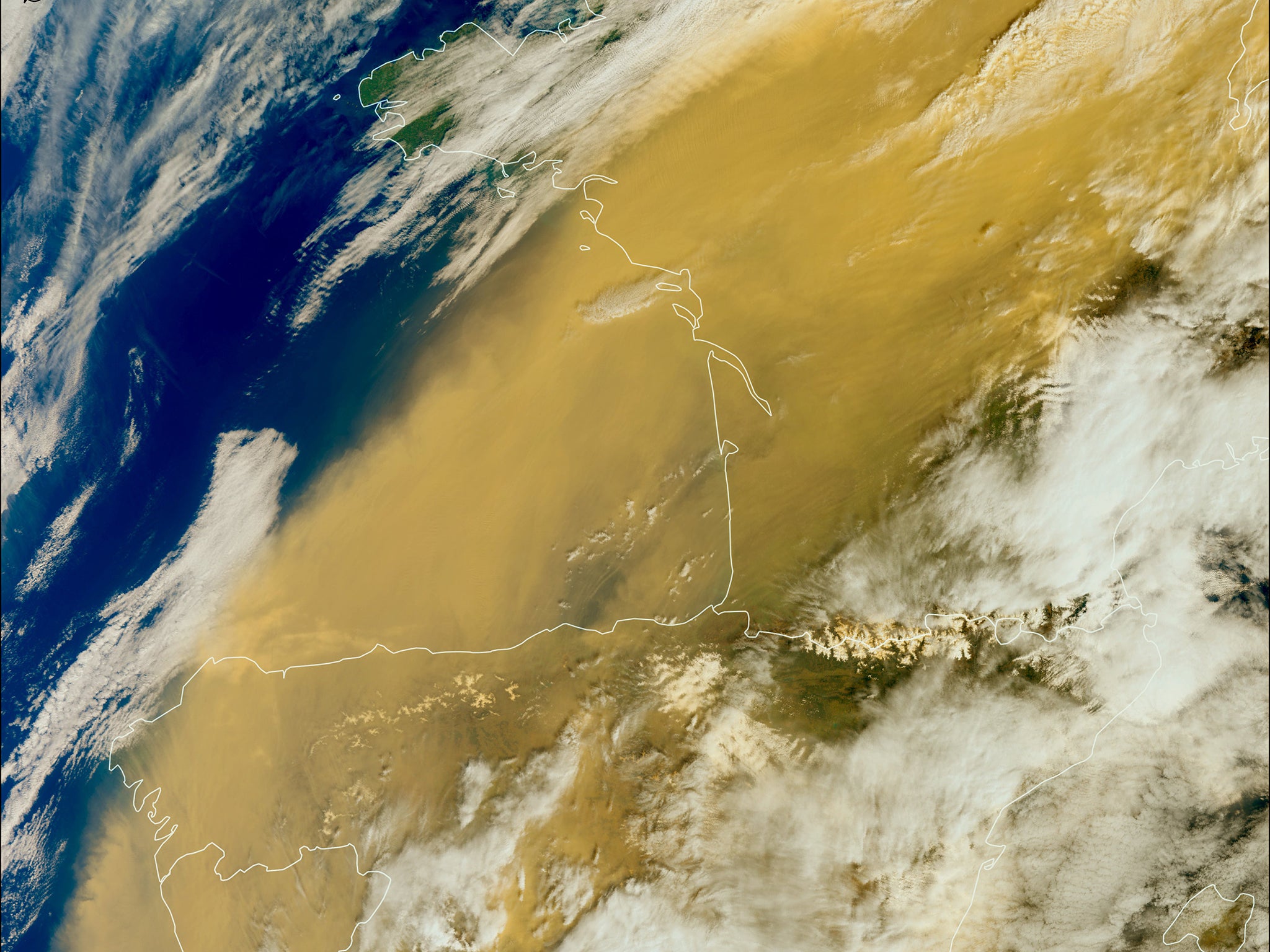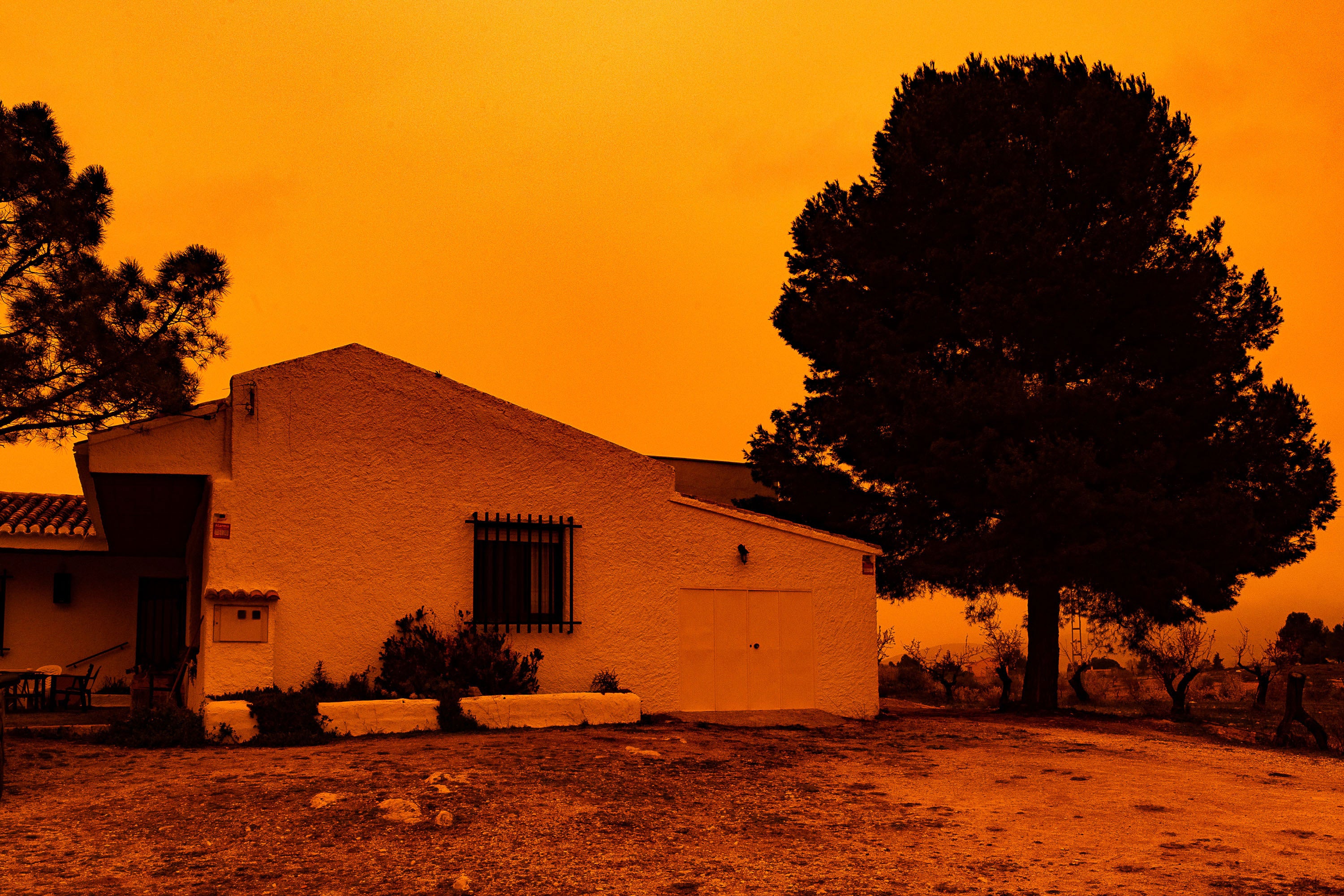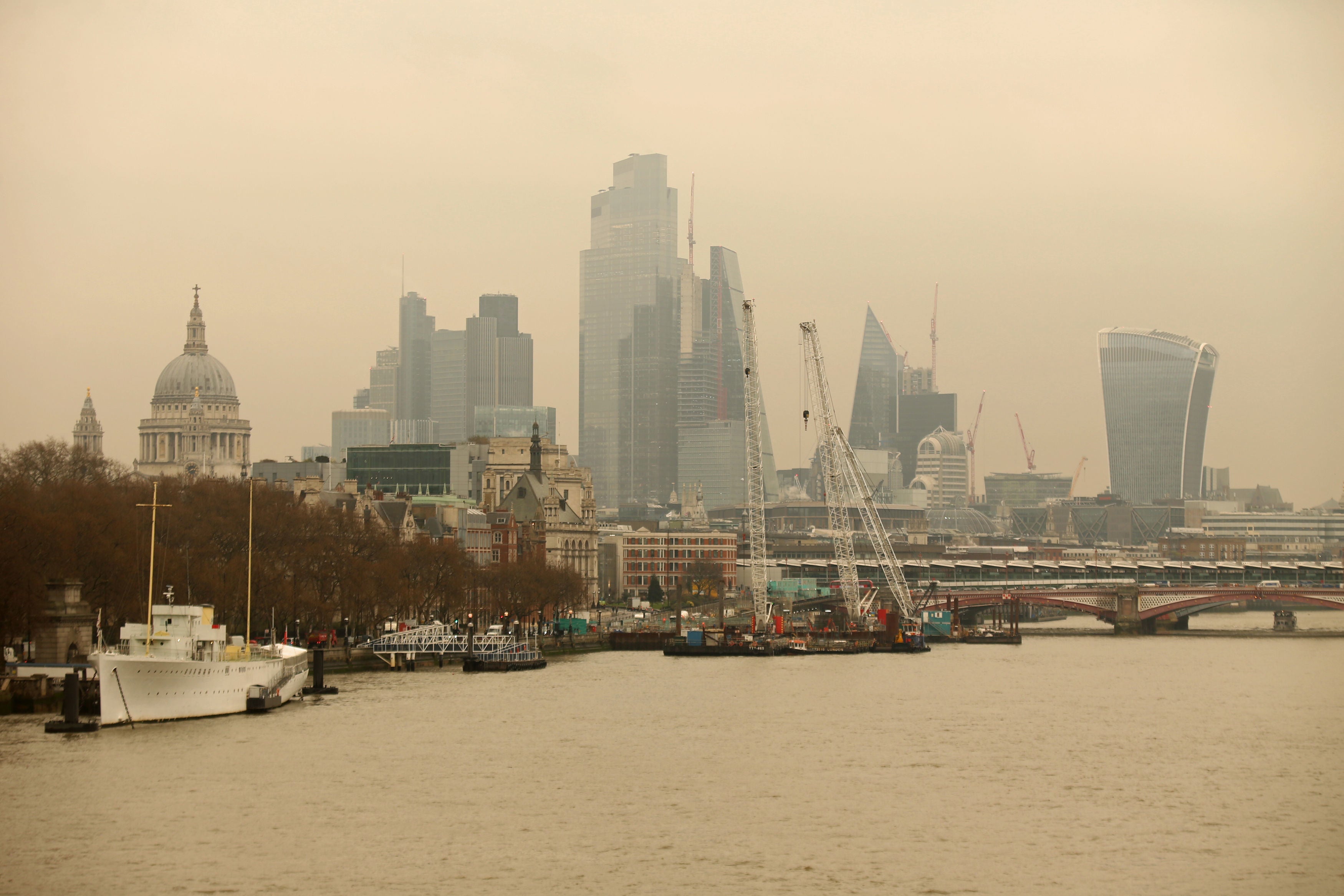Saharan dust transforms ski slopes into ‘surface of Mars’ as Spanish resort turns orange
The dust cloud has been swirling over Europe this week
Skiers have been sweeping through a strange new snowscape after a Saharan dust cloud left slopes with an unearthly orange coat.
Desert dust was carried hundreds of miles and dumped on ski resorts across Europe, including southern Spain and southwest France.
Online commenters likened a clip of the discoloured slopes shared on Twitter to the surface of Mars.
Footage shows a skier winding their way down a mountain, with white snow only visible where their skis have cut a path through the dust.
The dust cloud has been swirling over Europe this week, turning skies sepia from Madrid to the Swiss Alps.
It has made it hard to breathe in parts of Spain, and gave cleaning crews extra work as far away as Paris and Belgrade.

The cloud even reached parts of the UK on Wednesday, leaving cars and buildings with a fine red coat.
Winds whipped up the dust from the Sahara desert in North Africa and wafted it across the Mediterranean on warm air driven by Storm Celia.

Satellite images showed the scale of the cloud blanketing western Europe.
Spain was hit hard – local officials advised the public to wear masks and avoid outdoor exercise. People with allergies and respiratory problems are particularly vulnerable to spikes in small-particle air pollution.

Experts, including Spain’s national weather service, described the event as “extraordinary” for the amount of dust in the air, but noted it had not broken any records.
“This is an intense event, but this type of event typically occurs once or twice a year, normally in February or March, when a low-pressure system over Algeria and Tunisia gathers up dust and carries it north to Europe,” said Carlos Perez Garcia, a researcher studying atmospheric dust at the Barcelona Supercomputing Center.

“Dust can reach the UK or even Iceland, as it did last year,” he added.
Saharan dust plays a vital role in the natural world, absorbing and reflecting the sun’s energy and fertilising ecosystems, according to Nasa Earth Observatory.
In summer 2020 an enormous dust storm dubbed “Godzilla” swept nearly 24 tons of material from the Sahara to North and South America. It was so vast astronauts tweeted photos of the dust cloud from the International Space Station.
After “Godzilla” took off, Nasa used satellite data and computer modelling to study the plumes.
While dust clouds will still vary from year to year, scientists predict that this century, plumes will be the smallest in 20,000 years due to climate-driven ocean heating.
Subscribe to Independent Premium to bookmark this article
Want to bookmark your favourite articles and stories to read or reference later? Start your Independent Premium subscription today.






Join our commenting forum
Join thought-provoking conversations, follow other Independent readers and see their replies
Comments